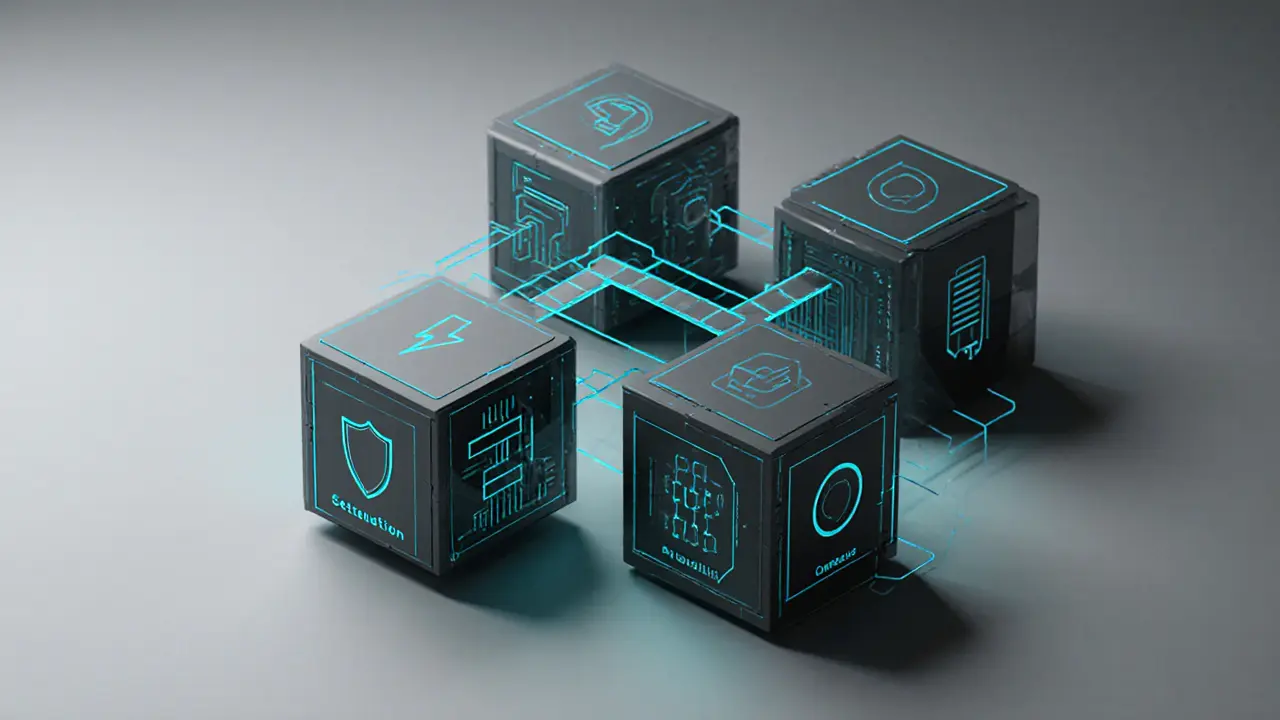Scalability in Blockchain – Key Concepts and Real‑World Solutions
When dealing with Scalability, the ability of a blockchain network to handle growing transaction loads while keeping fees low and confirmation times short. Also known as throughput, it directly shapes user experience and determines whether a platform can support mass adoption. Sidechain, a separate blockchain that runs in parallel to a main chain and can offload transactions is one of the most talked‑about ways to boost scalability. Gas fees, the cost users pay to execute operations on a blockchain network also play a role—high fees can choke the network, while low fees encourage more activity. Finally, DeFi lending, crypto‑based borrowing and lending that runs on smart contracts illustrates why scalable infrastructure matters: lending protocols need fast, cheap confirmations to keep interest rates competitive.
Sidechains improve scalability by offloading work from the main chain, creating a two‑way peg that lets assets move back and forth securely. This bridge mechanism—often called a blockchain bridge—lets developers build high‑speed applications without overloading the core network. The trade‑off is extra security risk: if the bridge is compromised, assets can be stolen. Still, many projects adopt this model because it enables new use cases, such as gaming or micro‑transactions, that would otherwise be too expensive on a crowded base layer.
Gas fees are tightly linked to scalability. When a network reaches capacity, miners prioritize the highest‑paying transactions, pushing average fees up. Users then either wait longer or pay premium rates, which can deter everyday use. Solutions like fee‑burning mechanisms, dynamic fee markets, or layer‑2 rollups aim to flatten fee spikes and keep costs predictable. By lowering fee volatility, a blockchain becomes more attractive for both retail traders and enterprise applications.
DeFi lending platforms showcase the practical side of scalability. These services rely on rapid block confirmations to settle loans, calculate interest, and enforce collateral liquidations. If the underlying chain stalls, liquidations can be delayed, exposing lenders to higher risk. Scalable chains—whether through sharding, rollups, or sidechains—allow lending protocols to process many loans simultaneously, keeping yields stable and user confidence high.
Mining pools and hash‑rate distribution also affect perceived scalability. Large pools can dominate block production, which may centralize power but also smooth out block times, reducing variance. Conversely, a fragmented miner landscape can cause occasional delays, especially during network congestion. Understanding how pool switching and hash‑rate geography influence throughput helps traders anticipate periods of high latency or fee spikes.
In regions where crypto is restricted, underground premiums emerge as a symptom of limited scalability. When official channels are blocked, users turn to private networks that often run on less efficient infrastructure, driving price gaps between official and black‑market rates. These premiums highlight the real‑world cost of a network that cannot scale to meet demand in a regulated environment.
Order types—market versus limit—interact with scalability too. In a high‑throughput environment, limit orders can sit in the order book with minimal slippage, while market orders execute instantly. However, when the network slows, even market orders may experience delayed execution, affecting traders who rely on speed. Knowing how scalability influences order execution helps investors choose the right strategy for volatile markets.
Looking ahead, upgrades like Ethereum’s sharding roadmap, new consensus algorithms, and cross‑chain interoperability projects promise to push scalability limits further. As these innovations roll out, developers and traders can expect lower fees, faster confirmations, and broader access to decentralized services. Below you’ll find a curated list of articles that dive deep into each of these topics—sidechains, gas fee economics, DeFi lending mechanics, mining pool strategies, and more—so you can stay ahead of the scalability curve.
Understanding Modular Blockchains: Architecture, Types, and Impact
Learn what modular blockchains are, how they split execution, settlement, data availability, and consensus, and why this architecture improves scalability and security.
VIEW MORE
